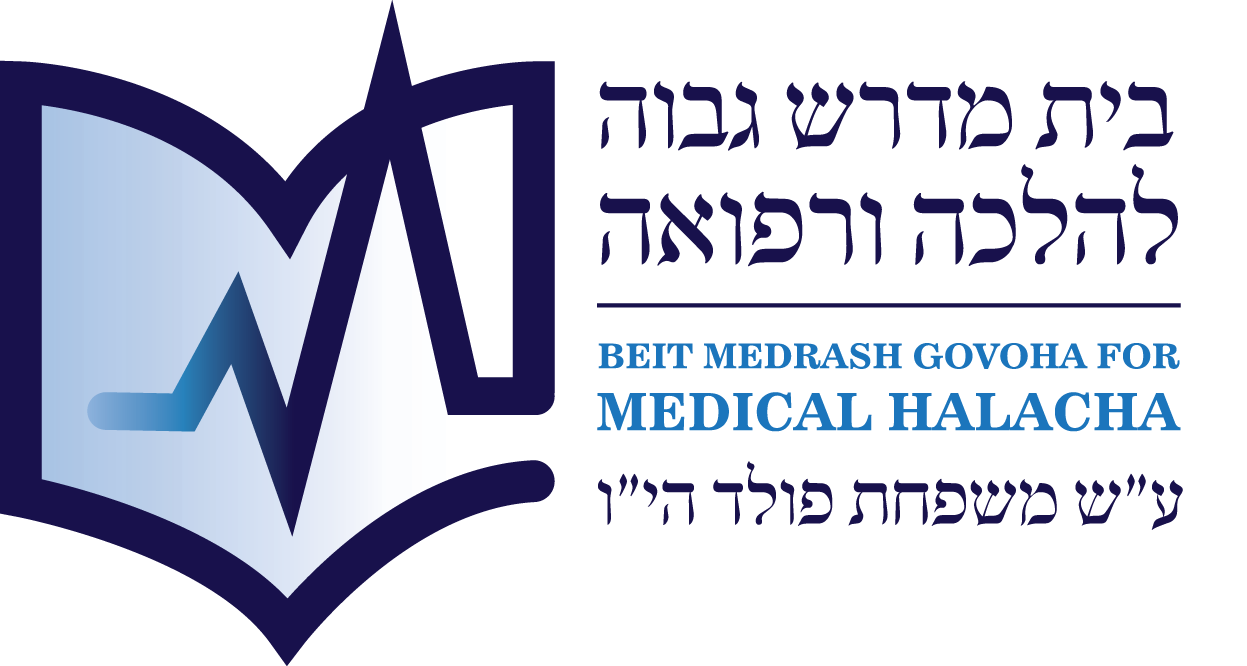There has been extensive discussion of the implications of Halachic rulings by Chazal that were grounded in the scientific understanding of their time but have since been contradicted by modern scientific discoveries. This debate carries important implications for Halacha u’Refua. To what extent should we prioritize contemporary scientific findings when they contradict the teachings of Chazal? This is a complex issue that we have explored on multiple occasions. In this essay, we will briefly examine a few intriguing sources where Chazal describe animals that are unknown to us today.
Sanhedrin 91a:
A heretic said to R’ Ami: “You say that the dead will live again, but they have already turned to dust! Can dust come to life?” He replied: “I will give you a Mashal. To what may this be compared? To a human king who said to his servants: ‘Go and build me a great palace in a place where there is neither water nor earth.’ They went and built it. After some time, it collapsed. He then said to them: ‘Rebuild it in a place where there is both earth and water.’ They said to him: ‘We cannot.’ He became angry with them and said: ‘If in a place where there was neither water nor earth you could build, now that there is water and earth, you should certainly be able to build?!’ If you do not believe me, go to the valley and see a mouse that today is half flesh and half earth, and tomorrow it will have multiplied and become fully flesh.”
Rashi explains: “A mouse called Ashkarol (squirrel) among the species is one not born through reproduction. On one day it begins to form and emerge from the earth, and by the following day it moves about as a fully formed creature.”
The Rambam explains further (Peirush haMishnayos Chulin 9:6):
The formation of this mouse from the earth to the degree that part of it is flesh and part of it is clay… is a very well-known phenomenon, and countless people have told me they have seen it. The existence of such a creature is astonishing and defies any explanation.
Tosfos Yom Tov in Chulin adds: “This, in my opinion, is a great argument against those who believe in ‘Kadmus’!”[1]
The Tiferes Yisrael (Boaz, Chulin ibid.) discusses this further:
I have heard heretics mock this creature mentioned here and in Sanhedrin 91a, denying its existence. Therefore, I see fit to recount what is stated in a German book authored by a well-known scholar named Link, in his book Urwelt, Part I, p327. He reports that such a creature exists in Egypt in the province of Thebes, called ‘dipus jaculus‘ in Egyptian and ‘spring mouse’ in German. Its front part—head, chest, and arms—are fully formed, while its hind parts remain unformed lumps of earth. After some days, it transforms completely into flesh. “How great are Your works, O Lord.”
The Yerushalmi mentions another creature connected to the earth (Kilayim 8:4):
Mishna: … The Adnei haSadeh is a living creature. R’ Yossi says it transmits impurity in a tent like a human…
Gemara: This is a wild man of the mountains. It lives connected to the ground through an umbilical cord and if the cord is cut, it dies.
There is a Machlokes between the Chachamim and R’ Yosi as to whether Adnei haSadeh is classified as an animal or a human. It greatly resembles a human and has been identified with the orangutan.[2] According to the Yerushalmi, it is connected to the earth by an umbilical cord, and when severed, it dies immediately – just like a fetus detached from its mother’s umbilical cord.
[The third and most fascinating creature related to this discussion is the phoenix—the legendary bird that, according to Midrash Rabah, explodes into flames every thousand years and is reborn, living forever. We will not elaborate on it here.]R’ Pinchas Eliyahu Horowitz of Vilna (1765-1821) makes some related comments in Sefer haBris (1:14, 73b). He writes to refute a Maskil who ridiculed the Mesora of Chazal:
Regarding small creeping creatures: The scholars of the nations of the world have stated that they too, are formed and born from the seed that their fathers produce, just as is the case with larger living beings. No creeping creature or living being in the world, even among the tiniest of creatures, is formed from refuse, the dust of the earth, decayed matter, or rotting food. Rather, they are generated from the eggs laid by their mothers in the air, which then fall onto these substances, and the heat of the sun causes worms to emerge from them. The author of Reishis Limudim[3] supports this view and strives to provide a rationale for it.
… However, this is not the opinion of the Chachmei Yisrael on this matter. Rather, they stated that small creatures exist, as well as large ones, [that were] generated without a seed of their fathers or eggs of their mothers, but rather, worms and tiny creatures are produced from refuse. For our sages taught in the Mishna: “A mouse that is half flesh and half earth – if one touches the flesh, he becomes impure; if he touches the earth, he remains pure.” Rashi explains: “There is a species of mouse that does not reproduce but rather forms itself from the earth, just as refuse generates worms.” Similarly, the salamander mentioned by R’ Akiva (in the Gemara ibid.) is generated from fire. How, then, could a salamander have a father or a mother?
The proof brought by the Reishis Limudim – who claims that if spontaneous generation were true, then a completely new species would have to be created, which is a well-known falsehood, and that the number of species always remains constant, neither increasing nor decreasing – is of no substance. From the day G-d created the heavens and the earth, and all species of creatures, as well as fire, water, and air, He embedded within the nature of the Earth the ability to generate a specific type of mouse when the soil is in a certain condition. Similarly, He embedded within the nature of fire the ability to produce a salamander when fire exists in a certain state, and He embedded within the nature of air the ability to generate extremely tiny creatures when the air is in a particular condition. Likewise, He embedded within water the ability to produce specific aquatic creatures when the water is in one state, and different ones when the water is in another. Therefore, the waters of rivers do not produce the same creatures as stagnant waters, and the same applies to other types of water…
I am astonished that he wrote, “This is a well-known falsehood,” about something that Rambam affirmed as a well-known truth… Indeed, the words of the sages provide a better understanding of this matter than anything proclaimed by the researchers of the nations.
One practical halachic implication of this discussion is the Issur of killing lice on Shabbos. The Shulchan Aruch (O.C. 316) rules:
A flea – called barghout in Arabic – may not be trapped unless it is biting, and it is forbidden to kill it… but a louse may be killed.”
The Mishna Berura (ibid. 38-41) explains, based on the Gemara (Shabbos 107:)
We differentiate between a flea and a louse because all the Melachos of Shabbos are derived from the work performed in the Mishkan. The prohibition to take the life of any living creature on Shabbos is learned from the slaughtering of rams and Tachash skins used in the Mishkan… And [Chazal] say: Just as the rams and Tachash skins came from creatures that reproduce, so too does the prohibition [only] apply to creatures that reproduce. This excludes the louse, which does not come from a male and female but rather emerges from sweat, and, therefore, it is not considered a true creature. However, a flea, although it also does not reproduce in the conventional sense, is nevertheless formed from the earth, and thus it possesses a life force as if it were created from a male and female, making one liable for taking its life.
What is the ruling today, given that scientists assert that no animals are created from dust? Should killing lice on Shabbos now be forbidden, since we know they do reproduce?
Many years ago, R’ Yitzchak Lampronti, author of the encyclopedia “Pachad Yitzchak“, addressed this question. He makes some fascinating points in the following letter:
If I was not afraid [of erring], I would say that today, when scientists have observed, studied, and documented that every living being, without exception, originates from eggs – and they have proven this with clear evidence – therefore, one who values his soul should distance himself from killing either fleas or lice and should not put himself in a situation of potential liability for a Chatas. And in this matter, I would say that if the Chachmei Yisrael were to hear the evidence of the scholars of the nations, they would reconsider and rule according to their findings…
However, I posed this question to my Rebbi, R’ Yehuda Brill of Mantua, and he upheld the Heter (to kill lice) in his response:
I was asked whether, in our time, when the world is filled with the knowledge of scientists who are engaged in these matters, who assert that every living being is born and formed from eggs, it remains permissible to kill lice on Shabbos. I responded that we should not change the Halachos established by our predecessors simply because of the research of non-Jewish scholars. Behold, you can see that many of these scholars deny the existence of the evil eye with various arguments, yet the Ramban wrote that it is sufficient to refute their claims by pointing to what is stated in the Gemara regarding the prohibition of standing near a friend’s field when it is full of crops. And one who believes does not need to seek further evidence or arguments, though they do exist in great abundance, because the traditions of our sages, upon which these laws and judgments are firmly established, are sufficient… Therefore, we should not deviate from what has been determined by our Gemara, even if all the winds of human inquiry blow against it, for the spirit of Hashem has spoken through us.
Consider what the Nesher haGadol, the father of all sages in Torah and in all forms of inquiry – the Rambam – wrote in his commentary on the Mishna, in Perek haOr v’haRotev, regarding the mouse that is half flesh and half earth…
[Signed] Yehuda, son of R’ Eliezer Brill, Mantua, Tzom ha’Asiri, 5478 (1718).
And my response to him was: I have seen your ruling regarding lice, and I said, “Well said, well said,” even though it is entirely contrary to reason. We are adopting a stringent approach rather than a lenient one in a matter where even the halachic authorities remain perplexed and uncertain regarding whether the pediculus or pulicis (types of lice) may be killed on Shabbos. See the Shiltei Giborim in Shabbos, 111b, 1 & 2. If it is the pediculus, what difference does it make whether it is from the head or another part of the body…
And scientists have demonstrated with clear evidence that no species originates from decay, and that eggs do not form from sweat but from living beings. The Chachmei Yisrael, who retracted their earlier views and conceded to the scholars of the nations regarding fixed constellations and the revolving celestial sphere, have shown with their own hands that not everything stated in the Gemara was received as a tradition from Sinai, but rather that the Chachmei Yisrael sometimes spoke based on human intellect and inquiry rather than Divine tradition.
What is the Halacha l’Ma’aseh?
R’ Avigdor Nebenzahl shlit”a quotes R’ Shlomo Zalman Auerbach zt”l who explained that Chazal did not mean literally that lice do not reproduce, but rather that, from a subjective perspective, they appear as if they do not, and thus they are treated halachically as dust. If so, their ruling remains unchanged today. However, the Dirshu Mishna Berura cites R’ Elyashiv and R’ Nissim Karelitz zt”l, who ruled that one should refrain from killing lice on Shabbos given our current knowledge that they do reproduce and are not the products of spo
[1] This refers to philosophers who argued that no living being can come into existence without a predecessor and, therefore, the world must have always existed. Tosfos Yom Tov proves that the existence of a mouse created from earth – life arising from inanimate matter –proves that the world was created and not eternal.
[2] The Rambam, (Peirush haMishnayos, ibid.) explains: “A living creature that resembles a human – storytellers say that it talks a lot and does not remain silent; its speech resembles human speech. Its name is Al-Nasnas.”
[3] Baruch Lindau (1759-1849) was an early figure in the Haskala and authored a 2-volume Hebrew language work on science and nature (the first volume appeared in 1788 and the second was published in 1810).











Add comment